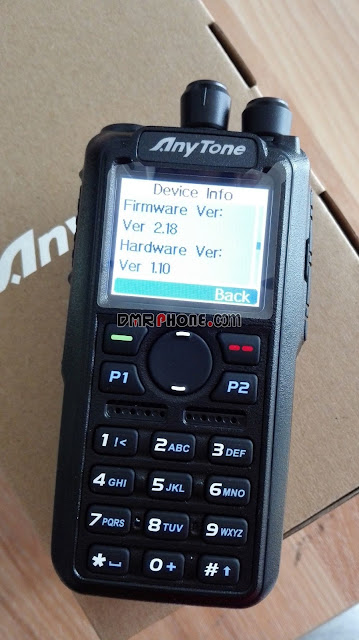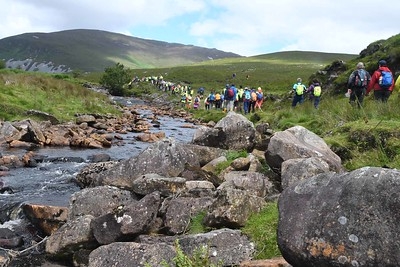The Radiotone RT4 is the most recent internet
radio available from Martin Lynch & Sons. It is basically an Android Phone
with a PTT button on the left hand side and a Motorola style speaker microphone
socket on the right hand side. It comes with a 4,200 mAH battery which gives it
a good operating period with each charge.
Accessories include a Speaker Mic, and a charging cradle which can be stuck to the windscreen using a suction mount. The suction mount is large and well able to support the radio.
.
Some say that this radio resembles a Motorola handheld radio, however, this comparison is like a silk purse and a sow’s ear and total poppycock. Whilst the case is relatively tough, it would not stand up to the abuse of being dropped or knocked about and it is an unnecessarily big old Hector of a radio. The volume control feels cheap in comparison to many of the Chinese DMR handhelds as does the casing. Tytera radios have a much better feel by comparison both on the controls and their casings. If the word Motorola had never been used it would not have arisen in this review.
As a mobile phone and for data usage, the RT4 is
open and can connect to any network. It sounds good and has a loud ring. As a
mobile phone it ticks all the boxes. There is even a front and rear pointing
camera.
The battery has a reasonable charge when taken
out of the box. A small stubby antenna is included but this for GPS reception
and has no part in cellular reception. A SIM card with data facilities is
required to set up the communications via Internet.
On switch on the RT4 goes through a start up of
the Android system. A few Apps are installed already such as Zello, WattsApp,
YouTube, which can be uninstalled. Apps such as Echolink for Android, Teamspeak
3, and APRSdroid are useful and there is ample space for them and a few more if
necessary.
As with the Inrico TM-7, it is necessary to
register with the International Radio Network. Once the network key has been
issued, it is a simple procedure to set up and activate the network.
Echolink requires a copy of the licence to be submitted before access to the
Echolink network. APRS does occasionally require a copy of the licence before
it can be activated. The APRSdroid program requires a minor payment to download
but this will not break the bank.
The recent versions of Zello seem to launch if
the PTT is depressed in EchoLink or Teamspeak 3 operation. Zello is more of a
general purpose program for communication so it is best to dispense with
it if not really required. It is possible to use the RT4 as a portable hotspot
which may be of use whilst out in the field.
The audio on transmit and receive is clear and
crisp and operation of the radio is no different to the use of any other
handheld once established in a chat room.
As one can use a mobile phone SIM with data, it is possible to use the RT4 as a mobile WiFi hotspot which makes it a useful tool when out in the field. Perhaps for use with a tablet or better still to provide internet for a mobile Digital Hotspot.
As one can use a mobile phone SIM with data, it is possible to use the RT4 as a mobile WiFi hotspot which makes it a useful tool when out in the field. Perhaps for use with a tablet or better still to provide internet for a mobile Digital Hotspot.
So what are the advantages?
Internet radio is not dependent on line of sight
or a repeater, or enhanced propagation for reliable communications. The communications are not impaired by
QRM, Contest Operators or those who like to tune up on top of others. Basically
it is a gentlemen’s operating system as there are no hassles. Abusers are transferred to the "naughty room" for their transgressions. They can exit this room but if they should find themselves in there on a frequent basis they will be removed and barred altogether.
It is possible to link into hubs with Repeaters,
EchoLink, and Digital modes of operation which are connected to a common group
area on Teamspeak. These areas include the UK Hub, the Scotland Ireland Hub and
there is also a London Area Hub to mention but a few as there are many more. This
ensures plenty of activity most hours of the day. There are other Networks to join, each of which have many group contacts. The International Radio Network hosts many groups and always quite lively. A More recent network is the World Hub which is currently under development. There will be a Scottish Irish Group and a London South East Group amongst others. Early tests have given good results with clear audio. This network will be in full operation by August 2018 and will be linked into many Amateur Networks.
This is a shot of the screen of the RT4 using Teamspeak. Generally one is directed to the welcome channel once linked onto the International Radio Network. Once membership is approved, it is possible to join any of the other channels available. To join a group one just has to touch the screen over the group name or, better still, use a stylus as used on an Android Tablet. Your call sign will appear in the group as a result. Indeed the screen is a tad small to manipulate with the end of a finger unless under 2 years old. Use a stylus if you have difficulty.
The only disadvantage is that if the cellular
network should go down or cellular reception is poor then communication is no
longer possible.
Some say that this is not amateur radio, well perhaps not in the strictest sense but try it first and see what you think.
Certainly it is not utilizing amateur frequencies although a license is required to
use the amateur facilities in Teamspeak 3. One does communicate in the same way
as an Amateur so therefore can be likened to Amateur Radio. Who really cares; it has a place in communications. Would one poo poo a marine radio just because it is not operating on an Amateur Frequency? If you are a Radio Operator you would operate this system as a Radio Operator.
Of course, there are many Amateurs who would
forget their pathway into the hobby. It is generally these guys who
are the first to jump up with the cry of “it is not real radio”. Get a life
lads! Many Radio Amateurs work DX following cluster entries. They are not really
working it as somebody is telling them where to look. Surely the fun is in the
hunt. A proportion of Radio Amateurs are black box operators and haven’t a clue what’s in the
box, or how it works, so this system is ideal for them. Amateur Radio has
deteriorated over the years so please do not sneer at new ideas. Incorporating new technology is what we do as Radio Amateurs. This surely
can’t be as bad as FT8 operation where it is possible to work DXCC whilst reading a
Dan Brown book as the computer does all the operating and communicating. How interesting can it get?
Aside from the amateur radio aspect of this
radio, if fitted with Zello, there are a lot of possibilities to keep in touch
with family members all over the world who can all link into one talk area.
Teamspeak 3 has many areas where one can set up a temporary private room for
chats. These are private as there is a requirement for a password to get into
them. Bear in mind that probably the younger generation have been communicating
over this type of system with group chats whilst playing World of Warcraft and
many other team games.
In conclusion, there is a wealth of
communications opportunities that can be exploited via this system with Amateur
Radio being only one of them. If one was operating a Taxi Radio, Marine Radio, or any other RF Radio, they would not give a second thought to operating using correct radio procedure. Why would this be any different? It is a practical system to use and will keep one in touch with other operators. The RT4 would complement the Inrico TM-7 system described earlier on this site.
Click HERE for more information on the International Radio Network



































